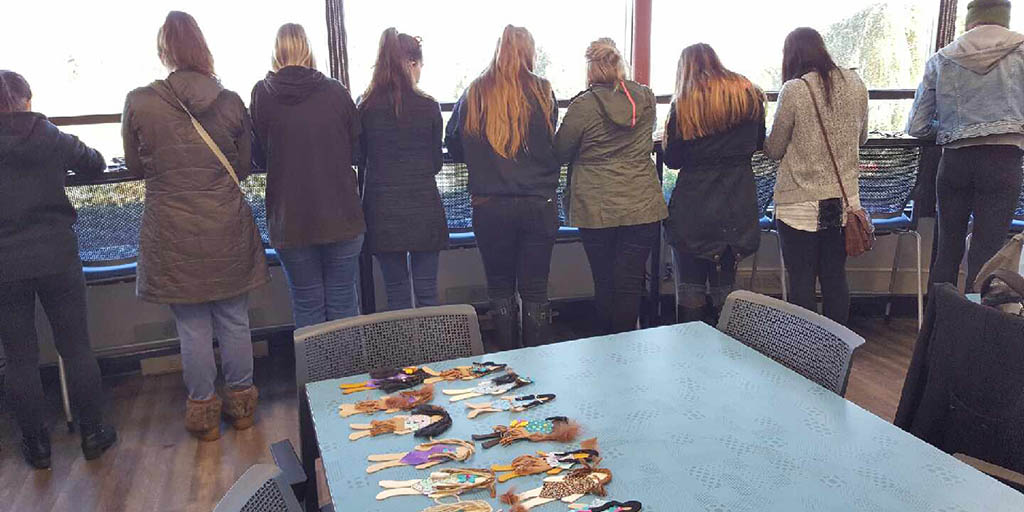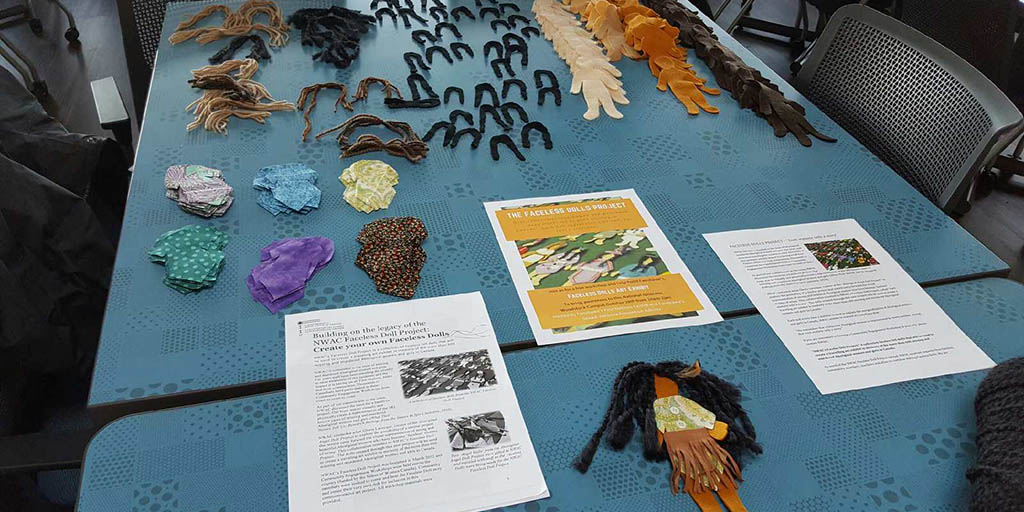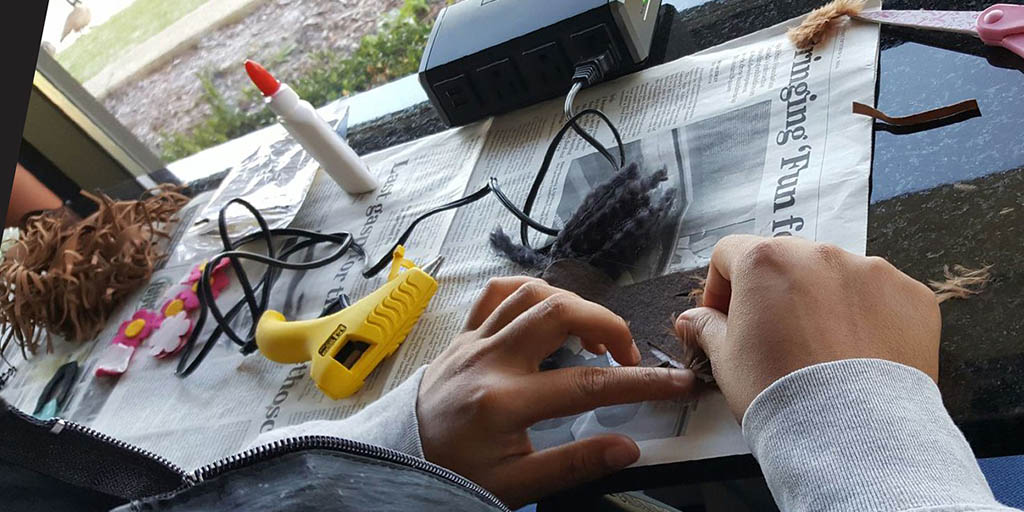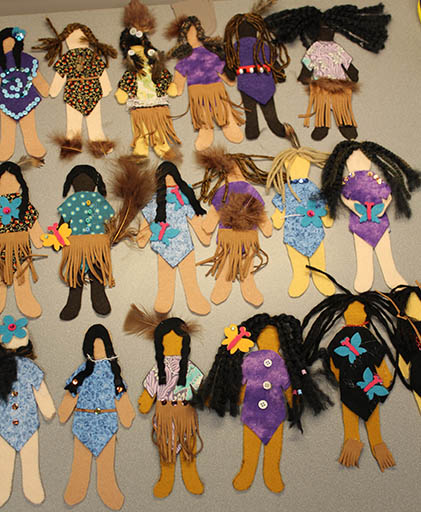Faceless but not forgotten
 CREDIT: LEAH MARSHALL AND MELISSA NOVACASKA
CREDIT: LEAH MARSHALL AND MELISSA NOVACASKAThe Faceless Dolls Project is a visual representation of the 12,000 missing and murdered indigenous women and girls in Canada. The dolls are created to bring more awareness and connection to the community.
Visualizing the increasing rate of missing and murdered indigenous women and girls in Canada
Students and staff at Fanshawe will have the chance to create meaningful art with a deep historical connection to the indigenous community through the Faceless Dolls Project.
The project, which was formed by the Native Women’s Association of Canada (NWAC) in collaboration with artist Gloria Larocque, is a way to bring greater awareness to the 1,200 missing and murdered indigenous women and girls in Canada.
This will be the first time Fanshawe will host the project, and will run side-by-side with the REDress Project which has previously been held on campus. This project also highlights the missing and murdered indigenous women and girls.
Fanshawe’s Faceless Dolls Project is a collaboration between the First Nations Centre and Fanshawe’s sexual violence prevention advisor, Leah Marshall.
It will make its way to each of the college’s campuses, including downtown, St. Thomas and Simcoe. Its first stop was at the Woodstock campus.
Chris Hannah, student success advisor at the First Nations Centre and member of the Métis people, said Fanshawe’s involvement is an addition to the overall project.
According to Hannah, this project will allow students and staff to visually see the number of women and girls affected by these issues.
“When this was started, they [NWAC] were aware of 600 missing and murdered indigenous women and so what they did was they had 600 dolls that they would have different community members make and they were all individual dolls,” Hannah said. “Six hundred is a really big number and it’s hard to really identify 600 with being 600 individual people, and so that was part of this project, to kind of visualize what that number means, and visualize these are 600 people with lives, with families, with children, with parents.”
Hannah said that although the number doubled to 1,200 women and girls, Fanshawe is hoping to at least create 600 dolls.
According to Hannah, there will be a longer stay at London’s main campus in F hallway, which will run from Nov. 28 to Dec. 2 from 10 a.m. to 2 p.m. This will also lead up to the National Day of Remembrance and Action on Violence Against Women on Dec. 6.
The red dresses, which represent the missing and murdered indigenous women, will also be hanging in F hallway.
After all the dolls are created, they will be on display in the Siskind Gallery from Feb. 13 to 17 and then be brought to the other campuses for a period of time. The dolls will be displayed in separate panels to showcase the contribution from each campus.
“The idea is that we’d like to have staff, students, whoever, come create the dolls…It’s open to everyone,” Hannah said.
According to Hannah, the issue of missing and murdered indigenous women and girls is something that was in the news every once in a while, but since Prime Minister Justin Trudeau announced the national inquiry, the frequency of this coverage has been down and those who don’t look into the news might not know much about the community.
“It is an important issue and it’s an ongoing issue whether or not there’s an inquiry going on and the whole inquiry is supposed to help us make societal and policy changes in regards to this, but it’s not going to end this issue. The issue is going to continue on until we actually make those changes. This I think is really, really good to help people check in their mind what their maybe biases are and to realize that this could be any woman,” Hannah said.
Marshall, who is also part of the project’s organizing committee said the motivation behind doing the Faceless Dolls Project stemmed from last year’s REDress Project and wanting to do something else that would bring together students from all the Fanshawe campuses on important social issues, one being missing and murdered indigenous women.
Marshall said she believes the 600 dolls will “get across the message that the dolls are symbolizing that these women are not just statistics”.
“They are mothers, daughters, sisters, friends, neighbours and although they are faceless, that part is to represent that this could happen to any woman, so it’s a way to take in the numbers, instead of just throwing out a statistic, to really recognize that each one of these people is an individual person,” Marshall said.
Marshall said both REDress and the dolls, will allow students to connect and that both Hannah and herself will be at the workshop to explain the story behind the project, as there are still many people who are not aware of the “severity of the issue”.
Gail Gallagher, senior manager at NWAC, said that after completing roughly 10 workshops over her two years at NWAC, she has seen that people really do love them.
“It brings out your inner child,” Gallagher said.
According to Gallagher, the workshops are impactful and good to have on college and university campuses.
“I think it’s really important to target the university and college students because I meet a lot of non-ingenious students and they lack the knowledge of indigenous history in Canada,” she said.
Gallagher said the dolls also remain faceless to represent how indigenous girls and women are treated in society.
Nonetheless, Gallagher said she is happy Fanshawe is another group participating in the workshop.
“I think it’s really great that people are doing this, I think it’s awesome.”
In addition, Marshall said both Hannah and herself chose materials and fabrics for the dolls that would represent the diversity of ingenious people.
“It’s the message of community. Everything that we do related to sexual violence prevention on campus has to do with a cultural shift and taking the blame and stigma away from the individuals that have experienced this violence, or have been victims of this violence or survivors of this violence and putting the onus back on our community to say that this type of violence is not tolerated and we all have a role to play in changing this culture,” Marshall said.







